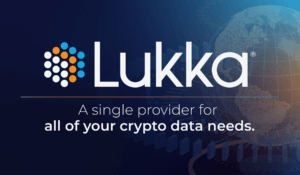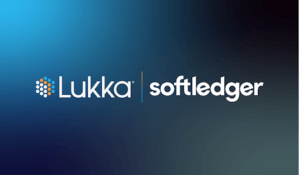Author: Olya Veramchuk, Director of Tax Solutions at Lukka
The ever-evolving digital asset ecosystem continuously generates new solutions, use cases, and offerings, resulting in the hundreds, if not thousands, of blockchains that exist today. Arguably not all of them have differentiated value, but the practicality of each offering is not the subject of this discussion.
While blockchain technology generally enables collaboration, coordination, and connectivity, each individual blockchain operates in a very siloed way. This is particularly relevant for the universe of decentralized finance (or DeFi): initially, native tokens only functioned on the parent blockchain without being able to communicate with other blockchains, which inhibited the opportunities offered by DeFi. Enabling cross-chain functionality via blockchain bridges is starting to help address the issue, allowing for network interoperability. This means that tokens, data, and smart contract instructions can be transferable between independent platforms, “allowing users to deploy digital assets hosted on one blockchain to dapps (or DeFi applications) on another, conduct fast, low-cost transactions of tokens hosted on otherwise less scalable chains, and execute dapps across more than one platform1.”
The mechanics of bridging and the LUNA example
Bridged assets do not exist on both blockchains simultaneously. Instead, the original asset gets locked on the parent blockchain, with an equal amount minted on the receiving blockchain. Upon redemption, the newly minted tokens get burned, and the original asset is unlocked. Typically, a small transaction fee is paid on each leg.
LUNA, the native token of the Terra protocol, is an excellent example of the bridging use case. When investors buy LUNA tokens on a centralized exchange such as Gemini or Coinbase, they purchase an ERC-20 version of the token. They can then withdraw LUNA into an Ethereum-compatible wallet and exchange it for the native version of LUNA using a bridge. The tokens can then be utilized within Terra protocol in a myriad of ways, including, but not limited to, staking, yield farming, purchasing NFTs, lending, or collateralizing for borrowing.
Bridging capabilities prompt several tax questions:
- Should bringing assets from one blockchain to another be treated as a taxable trade? Or can one argue that it should be tax-free?
- Are there any additional considerations that could influence the analysis?
As mentioned in our previous blogs, existing tax guidance for digital assets is scarce and does not directly address any of the DeFi issues. Therefore, we need to look to the existing framework to analyze the tax consequences of token bridging.
Is bridging a tax-free transaction?
Generally, for a realization event to occur under the US tax principles, two requirements must be satisfied:
- There should be a sale or exchange of an asset, and
- An asset received should be materially different either in kind or in extent from the original asset contributed2.
For tax purposes, a sale or exchange occurs when sufficient benefits and burdens of asset ownership are passed from one party to the other3.
However, the investor’s interest in the underlying tokens is not transferred to anyone. Instead, the original tokens are frozen on the original blockchain, and identical tokens are minted on the new blockchain in a 1:1 ratio. The investor retains all exposure to economic upside and downside. Although at the first blush, there seems to be an exchange of the original asset for the new asset, it is not entirely so.
Even if bridging mechanics is viewed literally and considered a property exchange, the materially different requirement still needs to be satisfied to trigger a tax realization event.
Traditional finance has a helpful analogy – an American Depository Receipt (or ADR). ADRs permit American investors to invest in foreign stocks, but without the complexities of dealing in foreign stock markets. Each ADR represents one or more shares of a foreign company stock held by a third-party depository bank. Investors who own ADRs are treated as directly owning the underlying stock for tax purposes.
ADR analogy could be applied to multichain assets. Just as the issuance of an ADR does not change the nature of the underlying stock, neither does the bridging of the asset from one blockchain to another.
Further, the holder of the bridged asset can dispose of it at any time or convert it back into the original tokens, all while retaining the benefits and burdens of the asset ownership. Using the earlier LUNA example, the ERC-20 version of the token simply permits trading of the asset on the centralized exchanges, which treads close to the core principles of ADRs.
Consequently, it is reasonable to suggest that bridging tokens does not yield assets that are materially different in kind or extent. Therefore, since neither the exchange nor the materially different requirements have been met, bridging should not give rise to a realization event.
Wash Sales Washout
Separately, subjecting digital assets to wash sales rules, which defer loss recognition, and constructive sales rules, which accelerate gain recognition, was on the Congressional agenda at the end of 2021. Although not codified by the year-end, both provisions were viewed as revenue raisers and remain appealing as a topic for federal legislators to address at some point this year.
This is significant for bridging activities. Were digital assets subject to these rules, and the US Treasury asserted that bridging should be treated as a taxable trade, DeFi participants could use bridging to circumvent the deferral and acceleration mechanisms by simply moving the tokens onto a different blockchain for a nominal fee. Analyzing transactions at the parent asset level (e.g., ETH as opposed to wETH/ETH) yields a more comprehensive picture of the activities. In this context, the asset holder attempting to find the path forward does not see bridging trigger realization.
Is bridging a taxable trade?
However, despite the arguments presented above, it is conceivable that the tax authorities might take the opposite view.
As discussed above, a transaction would be taxable if both exchange and materially different requirements are met. The IRS may take a very literal view of a bridging transaction and argue that an exchange of assets occurs.
For example, in CCA 202124008 issued in June 2021, the IRS stated that “while [Bitcoin and Ether] share similar qualities and uses, they are also fundamentally different from each other because of the difference in overall design, intended use, and actual use.” This is because the Bitcoin blockchain was “designed to act as a payment network,” where the Ethereum blockchain was “intended to act as a payment network and as a platform for operating smart contracts and other applications.”
Although there the IRS was discussing the application of the like-kind exchange4 rules to certain token pairs (i.e., swap of BTC for ETH and a few others), bridging could be viewed similarly and mean that moving assets across fundamentally different blockchains might be considered creating materially different assets. As such, both legs of bridging could then be treated as taxable trades.
Conclusion
The digital asset ecosystem is vast, complex, and is growing at unprecedented rates, as do new service offerings. Investors must review asset functionality on each respective blockchain to determine whether a bridged asset undergoes some fundamental change that causes it to be materially different in kind or extent from the original asset, or whether bridging simply permits the asset to trade on a centralized exchange outside of the asset’s native ecosystem.
As always, taxpayers should proceed with caution based on their personal risk tolerance levels and consult their tax advisers for reporting advice.
About Lukka
Founded in 2014, Lukka serves the largest digital asset institutions through software and data solutions. Lukka bridges the gap between the complexities of blockchain data and traditional business needs. Its customers include Crypto Asset Exchanges and Trading desks, CPA and Accounting Firms, Fund and Financial Auditors, Fund Administrators, Miners, Protocols, individuals, and any other businesses interacting with crypto assets. All of Lukka’s products are created with institutional standards, such as AICPA SOC Controls, which focus on accuracy and completeness. Lukka is based in New York City. For information about Lukka, visit Lukka.tech.
- “What are blockchain bridges and why are they important for DeFi?” (https://blog.makerdao.com/what-are-blockchain-bridges-and-why-are-they-important-for-defi/)
- Treas. Reg. Sec. 1.1001-1(a)
- Grodt & McKay Realty, Inc., 77 TC 1221, 1237, Dec. 38,472 (1981)
- Sec. 1031
The information contained in this bulletin provides only a general overview of current tax issues related to staking and shall in no event be construed as the rendering of professional advice or services. As such, the information provided in this bulletin should not be used as a substitute for consultation with professional advisors. Before making any decision or taking any action regarding your digital currencies or the tax treatment thereof, you should always consult with an appropriate, licensed tax, accounting, or other professional. To the fullest extent permitted by law, in no event will Lukka, Inc. (including its related entities, owners, agents, directors, officers, advisors, or employees) be liable to any reader of this bulletin or anyone else for any direct, indirect, or consequential loss or loss of profit arising from the use of this bulletin, its contents, its omissions, reliance on the information contained within it, or on opinions communicated in relation thereto or otherwise arising in connection therewith.




